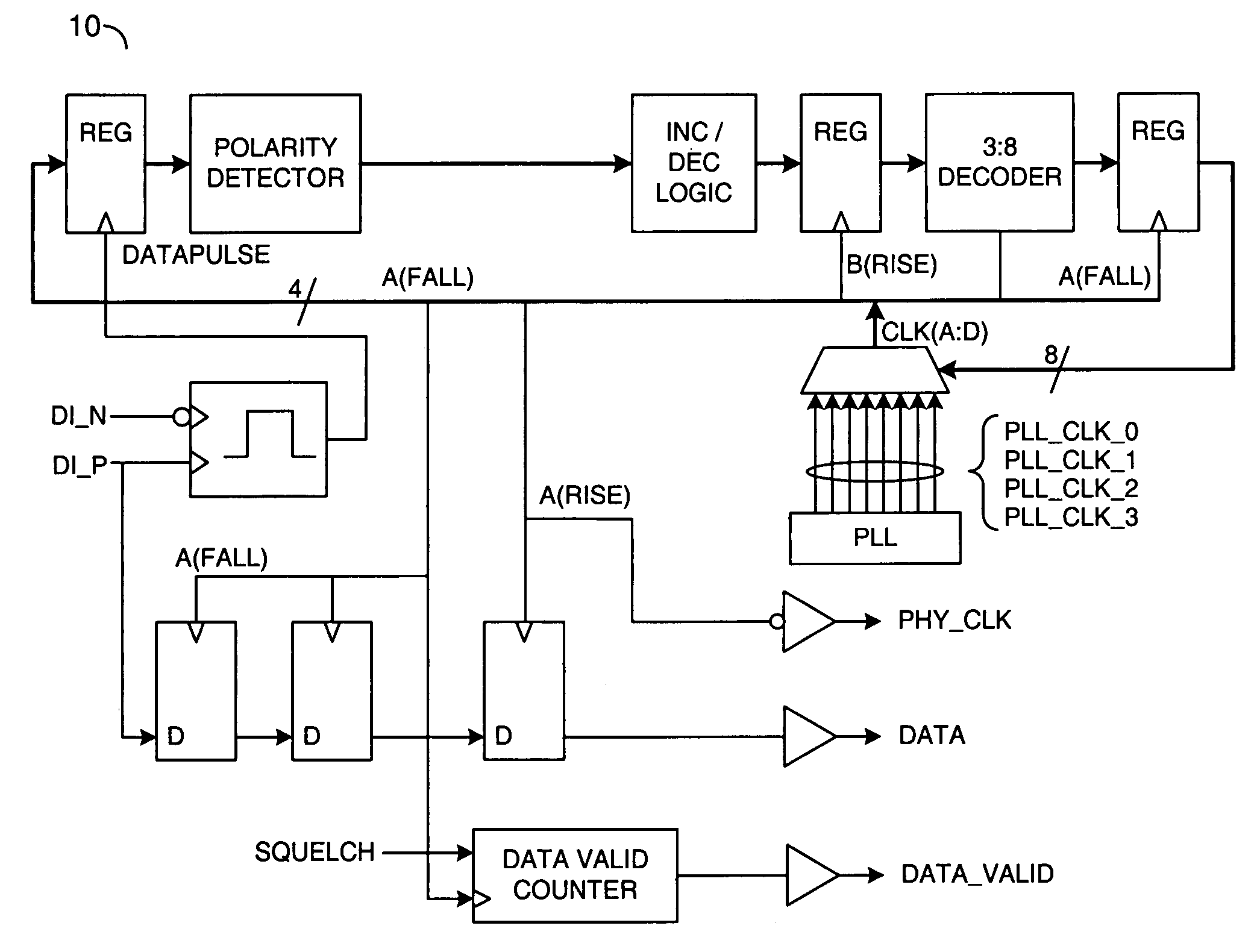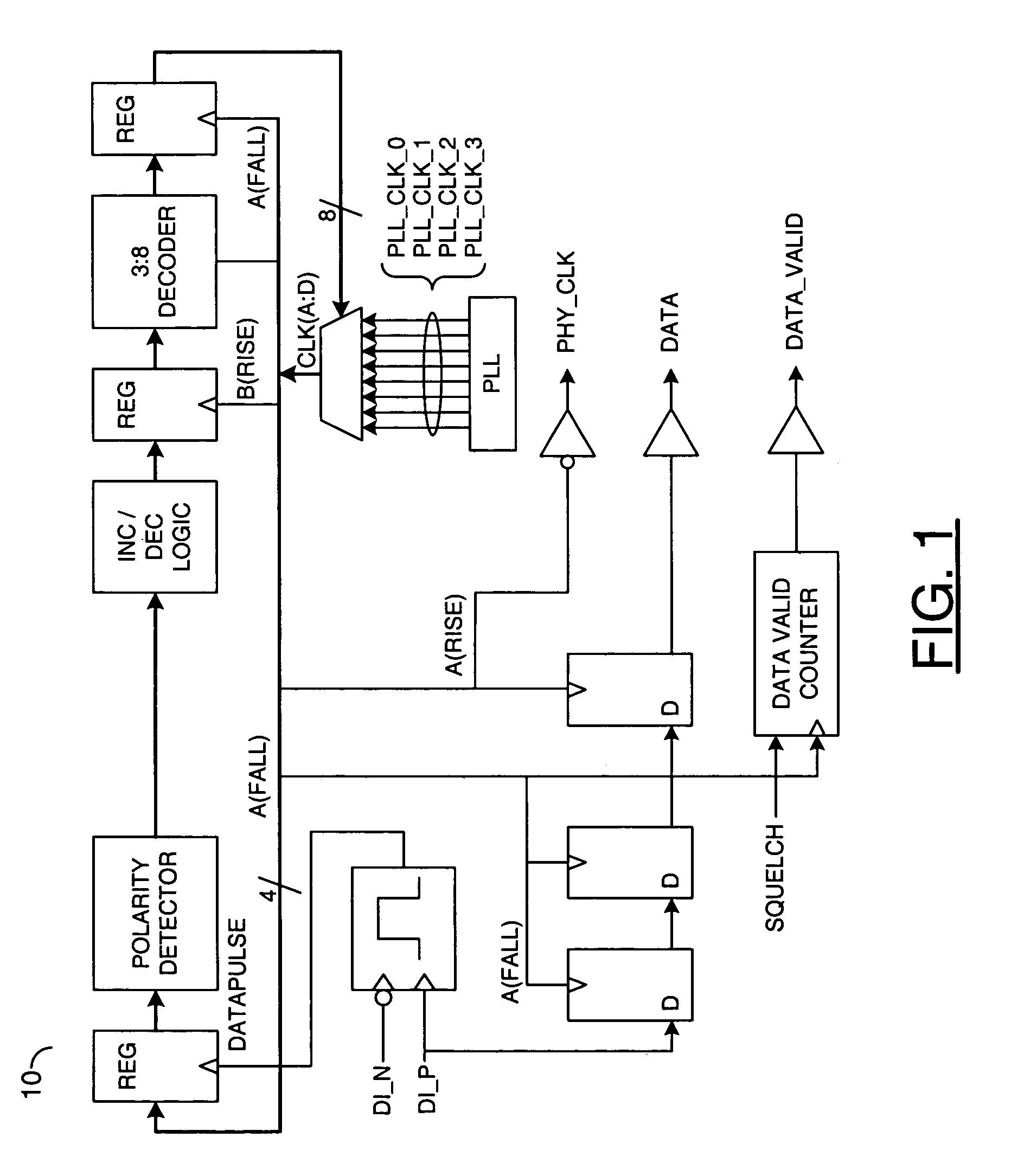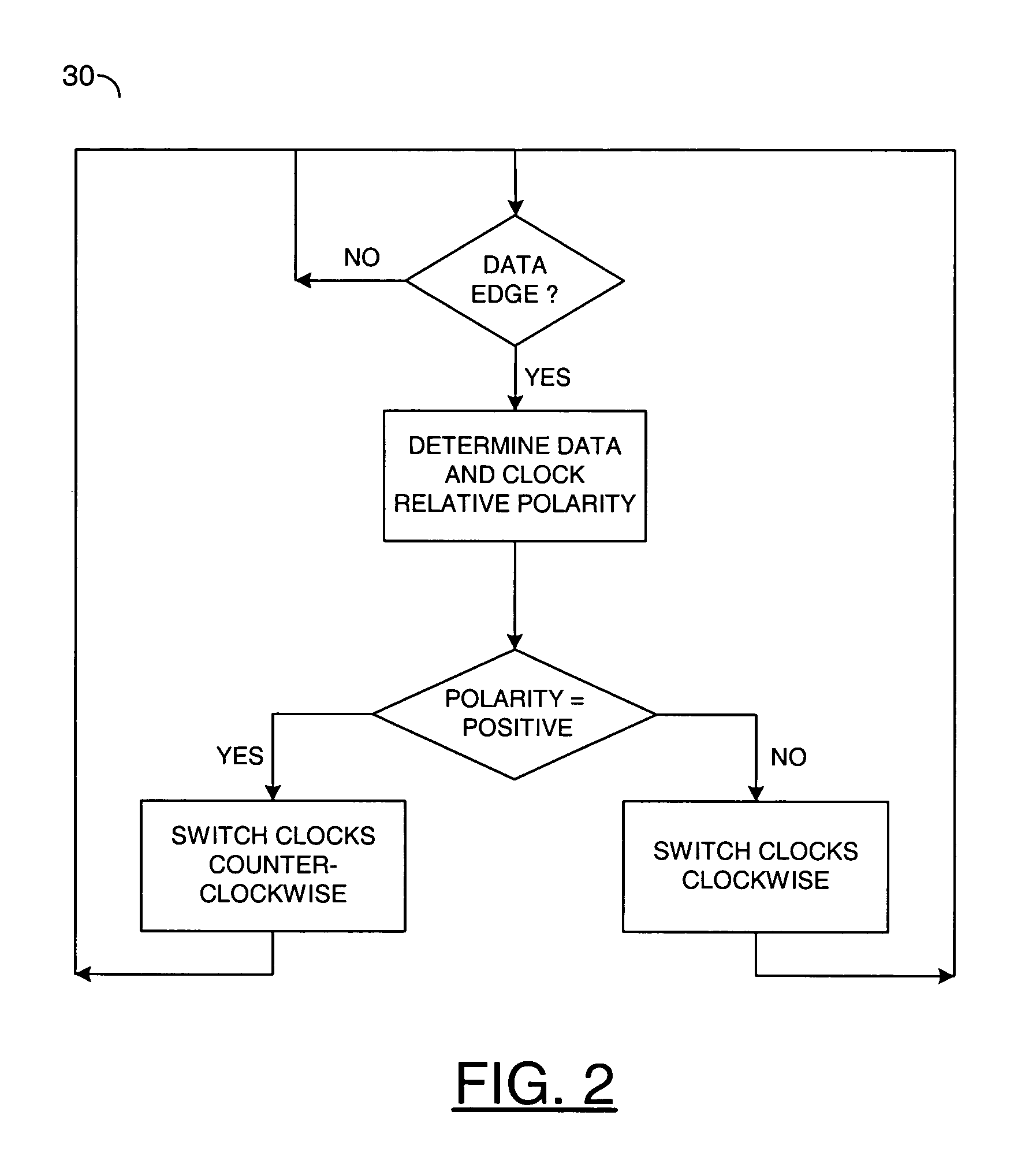Linearized digital phase-locked loop method
a phase-locked loop and linear technology, applied in the field of linearized digital phase-locked loops, can solve the problems of inability to tolerate large input signal distortion, inability to truly “lock” the bang-bang system, and excessive jitter in the resulting recovered clock, so as to reduce the kinds of distortion associated with the bang-bang system, reduce data-dependent jitter, and reduce duty-cycle distortion
- Summary
- Abstract
- Description
- Claims
- Application Information
AI Technical Summary
Benefits of technology
Problems solved by technology
Method used
Image
Examples
Embodiment Construction
[0017]Referring to FIG. 3, a block diagram of a circuit 100 is shown in accordance with a preferred embodiment of the present invention. The circuit 100 generally comprises a logic block (or circuit) 102 and a control block (or circuit) 104. The circuit 104 may be implemented as a control circuit configured to adjust the frequency of an output clock.
[0018]The circuit 104 generally comprises a circuit 110, a circuit 112, a circuit 114 and a circuit 116. The circuit 104 may also comprise a number of memory elements 118a–118n and a number of buffers 120a–120n. The circuit 110 may be implemented as an edge detection circuit. The circuit 110 may present a signal (e.g., DATAPULSE) to the logic block 102. The signal DATAPULSE may be generated in response to a signal (e.g., DI—N) and a signal (e.g., DI—P). The signals DI—P and DI—N may be a complementary pair of signals. In one example, the circuit 110 may be configured to generate a pulse signal in response to a transition of a data signal...
PUM
 Login to View More
Login to View More Abstract
Description
Claims
Application Information
 Login to View More
Login to View More - R&D
- Intellectual Property
- Life Sciences
- Materials
- Tech Scout
- Unparalleled Data Quality
- Higher Quality Content
- 60% Fewer Hallucinations
Browse by: Latest US Patents, China's latest patents, Technical Efficacy Thesaurus, Application Domain, Technology Topic, Popular Technical Reports.
© 2025 PatSnap. All rights reserved.Legal|Privacy policy|Modern Slavery Act Transparency Statement|Sitemap|About US| Contact US: help@patsnap.com



